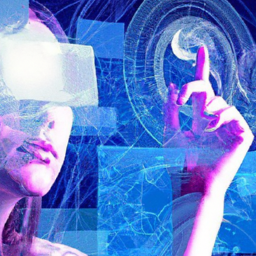The Role of AR and VR in Immersive Marketing
Have you ever dreamed of stepping into a different reality? Well, with the help of technology, that dream is now a reality. Augmented Reality (AR) and Virtual Reality (VR) are two cutting-edge technologies that are revolutionizing the way we experience the world around us. But what role do they play in immersive marketing?
What is Immersive Marketing?
First, let’s understand what immersive marketing is all about. Immersive marketing seeks to engage consumers by creating a multi-sensory experience that allows them to interact with a brand or product. It goes beyond traditional marketing techniques and aims to create a deep emotional connection with the consumer.
Immersive marketing techniques can include anything from interactive displays to sensory experiences that fully engage all of the senses. By doing so, it helps consumers form a more memorable and personal connection with a brand or product.
The Role of AR in Immersive Marketing
Augmented Reality (AR) provides an exciting opportunity for brands to create immersive marketing experiences. AR blends the real world with virtual elements, enhancing the user’s perception and interaction with their environment.
Imagine you are walking down the street and see an advertisement for a new sneaker. With the help of AR, you can use your smartphone or wearable technology to scan the advertisement and instantly see a virtual 3D model of the sneaker. You can rotate it, zoom in, and even try it on virtually.
This not only allows consumers to visualize the product in a more immersive way but also helps them make a more informed purchasing decision. It’s like having a personal shopping assistant right in your pocket!
The Role of VR in Immersive Marketing
Virtual Reality (VR) takes immersive marketing to a whole new level. VR offers a fully simulated experience that transports users to a different environment or world. By using a VR headset, users can feel like they are physically present in a different location, whether it’s an exotic vacation spot or the front row of a concert.
Brands can leverage VR to create unforgettable and highly engaging marketing experiences. For example, a travel agency could provide potential customers with a VR experience that allows them to virtually explore different vacation destinations, giving them a taste of what it would be like to be there.
VR can also be used to showcase products in a unique and exciting way. For instance, a car manufacturer could offer potential buyers a virtual test drive, allowing them to experience the performance and features of a vehicle without leaving their homes.
The Power of Immersive Marketing with AR and VR
AR and VR have the power to transform the way we experience brands and products. By creating immersive marketing experiences, businesses can engage and captivate consumers in a way that traditional marketing methods simply can’t.
The ability to interact with products in a virtual environment or overlay virtual elements on the real world allows consumers to make more informed decisions and form a deeper emotional connection with a brand. This ultimately leads to increased brand loyalty and higher conversion rates.
As technology continues to advance, the possibilities for immersive marketing with AR and VR are endless. From virtual try-ons to virtual test drives, these technologies enable brands to create unique, interactive, and unforgettable experiences for their customers.
So, get ready to step into a new reality and engage with brands like never before. The world of immersive marketing is just beginning, and AR and VR are at the forefront of this revolution.


